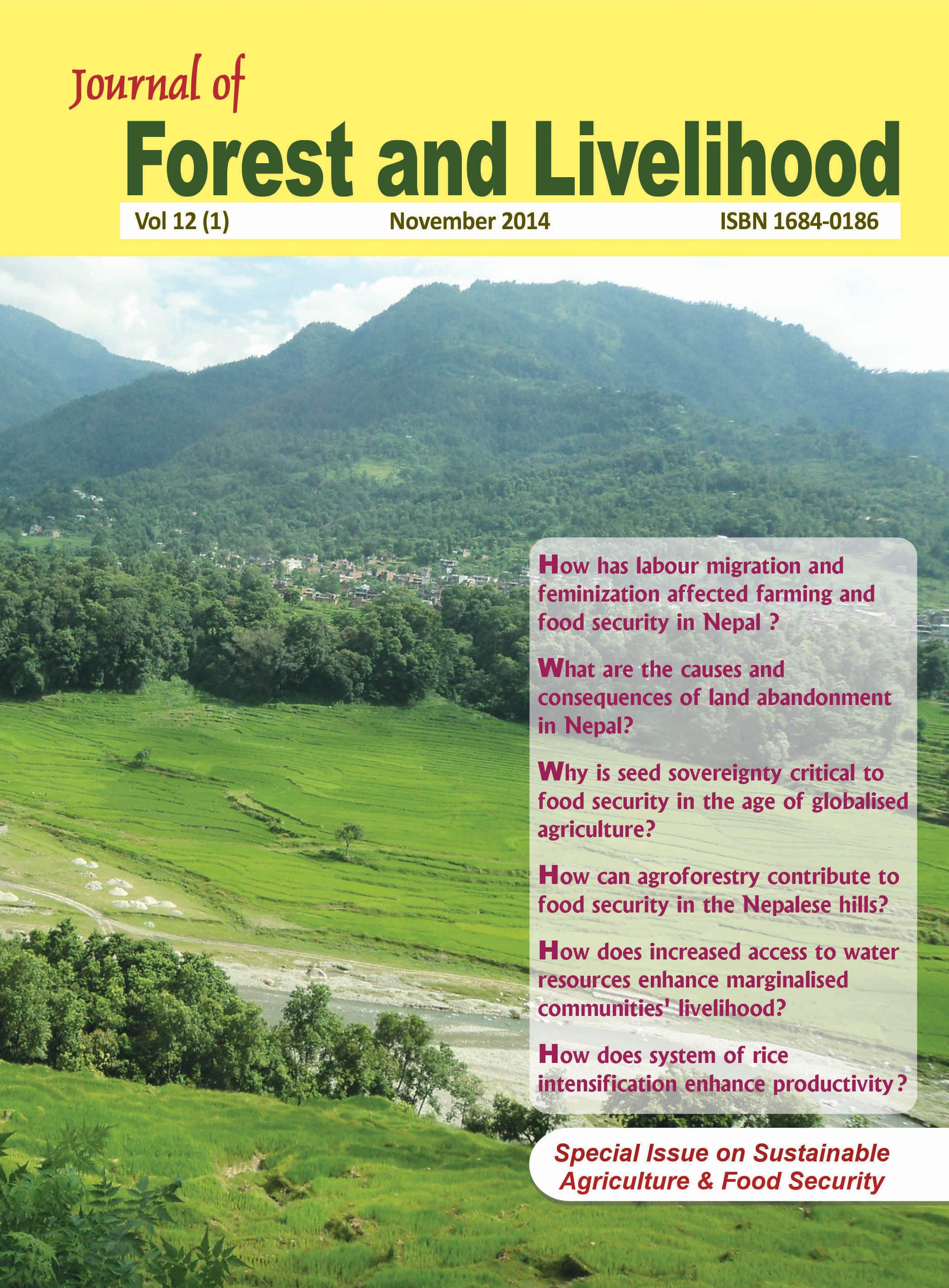Feminization of Agriculture and its Implications for Food Security in Rural Nepal
Keywords:
Agriculture, forestry, feminization, outmigration, food securityAbstract
The rural Nepal is going through unprecedented demographic, socioeconomic and environmental changes. There is a growing pattern of outmigration of male population from villages to urban areas and overseas in search of better opportunities. This is mainly due to the poor economic development processes that could not generate adequate income and employment opportunities at home, political and economic changes, and globalization, concomitant with attractive employment opportunities offered outside the country. Simultaneously, rural communities are facing the disincentives of worsening security in villages, employment opportunities, and subsistence farming becoming less and less rewarding and unable in meeting their basic needs. This has led to a situation where women, in addition to looking after children and the elderly, have to take additional responsibilities in farming within the traditionally male-dominant farming practices. This is not only inappropriate and unfriendly to women, but also has lowered the use and productivity of land; hence perpetuating, if not exacerbating, food insecurity. Women are increasingly adopting less intensive farming practices as well as abandoning agricultural lands. As a result, there is reduction in food production. Therefore, there is need for revisiting the agro-ecological practices to explore the possibility of reintroducing low input and less labour-intensive agro-forestry practices which can substantively reduce the workload of women, as well as ensure food security at local level.
Downloads
Downloads
Published
How to Cite
Issue
Section
License
Copyright (c) 2014 ForestAction Nepal

This work is licensed under a Creative Commons Attribution-NonCommercial 4.0 International License.
CC-BY-NC: This license allows reusers to distribute, remix, adapt, and build upon the material in any medium or format for noncommercial purposes only, and only so long as attribution is given to the creator.





